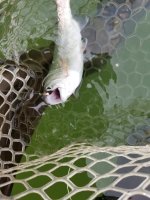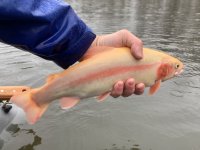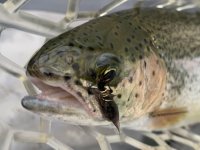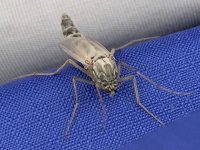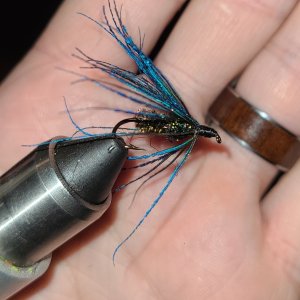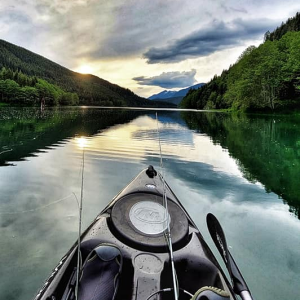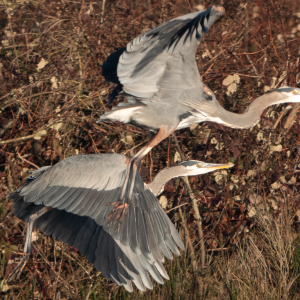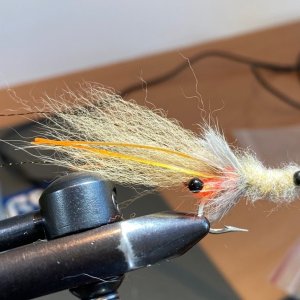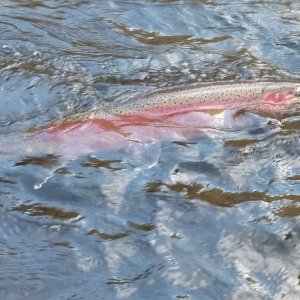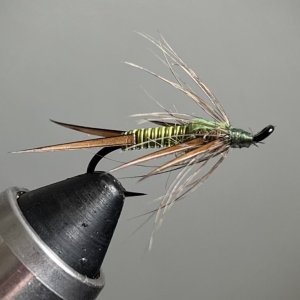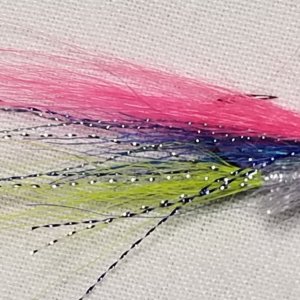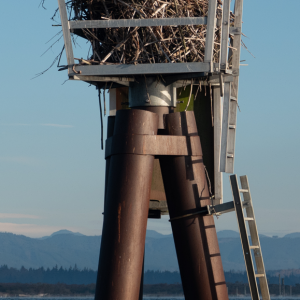I'm not a regular lake fisher, but I spend a little time on them before the rivers open up. I have a small seasonal lake near me that is stocked before opening day, and I usually fish it a few days after it opens when the crowds go away. Trolling or casting and retrieving a 'bugger or leech pattern easily fools the stocked fish a couple of feet below the surface along the weed line.
What I can't figure out is what the fish swirling below the surface out in the middle are feeding on. This is as early as 7:00am in water about 15' deep with the ambient temperature as low as 40F. My understanding of chironomids is they slowly make their way up the water column, hatching in the afternoon. So, I don't think they're feeding on midge pupae that early in the morning. It appears the swirls leave a few bubbles behind, but not all of them. Few are splashy, most are either a roll or a swirl a foot or so under the surface.
I've trolled Buggers and leeches and other streamers through the area without a sniff, as well as watched a few gear guys troll spinners and spoons without a touch.
Any suggestions? Scud pattern or? What's a good pattern to start with? Or should I hang a chironomid 2-3' under the surface?
What I can't figure out is what the fish swirling below the surface out in the middle are feeding on. This is as early as 7:00am in water about 15' deep with the ambient temperature as low as 40F. My understanding of chironomids is they slowly make their way up the water column, hatching in the afternoon. So, I don't think they're feeding on midge pupae that early in the morning. It appears the swirls leave a few bubbles behind, but not all of them. Few are splashy, most are either a roll or a swirl a foot or so under the surface.
I've trolled Buggers and leeches and other streamers through the area without a sniff, as well as watched a few gear guys troll spinners and spoons without a touch.
Any suggestions? Scud pattern or? What's a good pattern to start with? Or should I hang a chironomid 2-3' under the surface?

